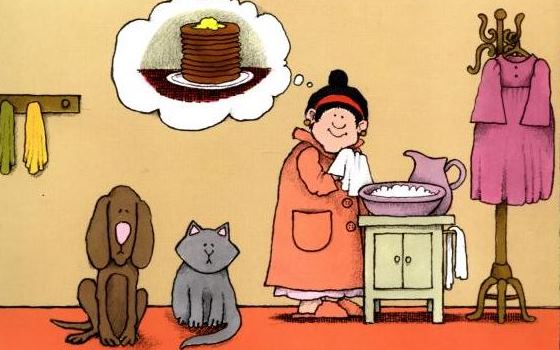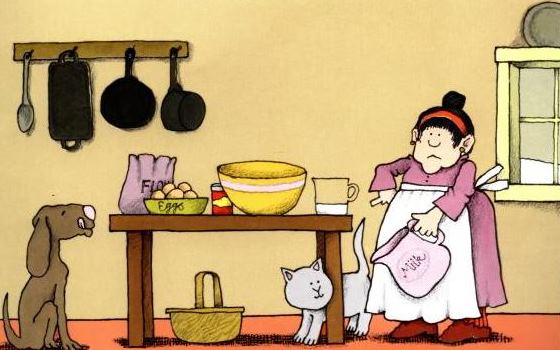My mother will be 89 years old in less than 2 weeks. She's had a lot of medical battles the past few years. She is such a treasure to all of us in my family. She has often mesmerized us with her stories. I truly believe her generation is the greatest. They grew up in difficult times and learned how to be survivors. Here is some of her story...
My mother was born in 1928 in the Belgian Congo (Zaire, Africa). Her father, was employed with Caltex. Her mother gave birth to my mother two months early, after falling off the back of a motorcycle in the jungle. She weighed 2 pounds and had to be kept warm by the stove (no incubators back then). My mother had a 7 year old brother. By the time she was two years old, the family left Africa and moved back to Liege Belgium because my mother was suffering from Jungle Fever and would not survive if she remained in the jungle climate of Zaire. Miraculously, she had survived premature birth and serious illness.
They lived in an apartment in the city of Liege. Mother attended a girl's school and lived a typical European city life. Then World War 2 broke out. Belgium was one of the first countries occupied by the Germans. She tells stories of blacking out windows to avoid air raids and bombings, rationed foods, falling bombs, and life under the occupation. She was a young teen at the time. Here are some of her stories.
What the Cat Dragged In...
Rationing. Everything was rationed from hosiery to food. Instead of hose, the girls drew lines on the back of their legs, for that's what hose looked like in those days. Coffee was replaced with chicory. When you went to the meat market, you never bought a rabbit without its head attached. Otherwise, you might find yourself eating a cat. They lived on the fifth floor of an apartment building with a meat market on the ground floor. They received a special treat once, courtesy of their cat. They had not had meat in a long time and she prayed for some meat. One night they heard a noise on the stairway: clump, clump, clump, clump. When they went to see what the noise was they found their cat dragging a ham up 5 flights of stairs. Sadly for the cat, they grabbed the ham, cleaned it off and feasted.
Her Father had a Sixth Sense...
My grandfather had an uncanny sense about danger which saved their lives many times. Once they were walking along in the countryside and sat on a bench to rest. After a short time, my grandfather said they needed to go. They found a shop with a bomb shelter when the bombs began falling. The dust was so thick everyone in the shelter was dipping handkerchiefs into milk and holding it over their mouths and noses so they could breathe. When they emerged from the shelter, the bench upon which my mother and her father had been sitting was gone... a bomb had landed directly on the bench.
Another time when this sixth sense saved them was on their way to Paris. Many believed the Germans would never make it to Paris so many evacuated to Paris. My mother and her father were walking to Paris from Liege. My grandmother stayed behind to care for her mother. They found themselves walking along among a group of American soldiers. The soldiers invited them to ride in the back of one of the trucks. They rode along for a little while when suddenly my grandfather said it was time for them to go. They got off the truck and set off in another direction on their own. Not long after they heard the hum of the airplanes and the guns of the German's strafing the road they had been traveling on.
Underground Army....
Belgium was a neutral nation and conquered early on. However, it had an underground army that fought actively against their occupiers. Both my grandfather and my uncle were part of this army. As a result they were also wanted by the Gestapo. To avoid being taken by the Gestapo, my grandfather volunteered to go work in a German factory (to escape suspicion and to carry out activities of the underground). He tried to blow up the factory but was unsuccessful. Many Belgians were conscripted and forced to work in the factories. Often they would try to sabotage the bombs or steal munitions. While working in Germany, my grandfather assisted in helping two French officers escape Germany. He was awarded a French medal for his action. When in Germany, they were forced to "Heil Hitler" and every time he uttered in French "Hitler is a pig". After about a week the Germans sent him back to Belgium because they thought he was crazy.
At one point, his mission was to deliver or receive a secret message. He was told to wait at a certain streetcar until the last one left. If the messenger had not arrived, he was to leave. He waited and waited until the last car was pulling away. He ran to catch the streetcar but lost his footing and slipped under the car. He lost his leg. The artificial leg worked in his favor several times in dealings with the German military...
Her brother, Roger, was also in the Underground Army. He worked in a munitions factory and stole parts of weapons to deliver to the Underground and assemble. Two of his companions were arrested after he had already left the factory. The Gestapo showed up at my mother's home looking for him. He escaped just before they arrived. My mother remained composed while the Gestapo played with his gun in front of the 13 year old girl questioning her as to where her brother could be found. She said she did not know. They searched the house. When they went into the room of my grandfather, he had his artificial leg laying out. The German office looked in and saw my one legged grandfather sitting on the bed; he said my grandfather did not need to get up as it looked okay and they did not need to search the room. My grandfather was relieved after they left because he had a gun under the bed. My mother and grandfather later wrapped up the gun and threw it in the river. My uncle made his way to his grandparents home where my mother met him and walked him out of town to a bus past the German checkpoints. He went to stay with an uncle in another town.
Paris....
After my mother and her father got to Paris, it was not long before the Germans invaded. All of the children in Paris were boarded on trains and sent out to the countryside to escape the city and live with farmers. My mother was separated from her father for several months living with a host family. Once the children were returned to their parents, she had to stay several more weeks until they found her family.
Healing...
The scars of living under occupation and witnessing atrocities run deep. My mom saw many evil things. Her grandmother hid three Jewish girls in her home until they were able to be taken into a convent for hiding. They knew bad things were happening to people. All through my childhood I recall my mother getting upset during war movies and she would begin using various negative expletives in French when she saw Nazis or SS. One of her friends just shared this insight with me. Betty VanderLinden writes: "I gave her the book The Hiding Place by Corrie Ten Boom. I hope you have read it! It was also a movie . Anyway, your mom said she stayed awake all night reading that book! She hated the Germans so much but she decided if the author could forgive them, she could too! I think she said she cried a lot in doing so but it was a good thing for her!" I remember my mother telling me: "I don't hate Germans anymore, just Nazis."
June 21, 2017 Update:
We lost my dear mother on June 10, 2017. I cannot begin to describe to you the hole it leaves in our lives and in our hearts. I only wish I had done more to document her rich legacy...









